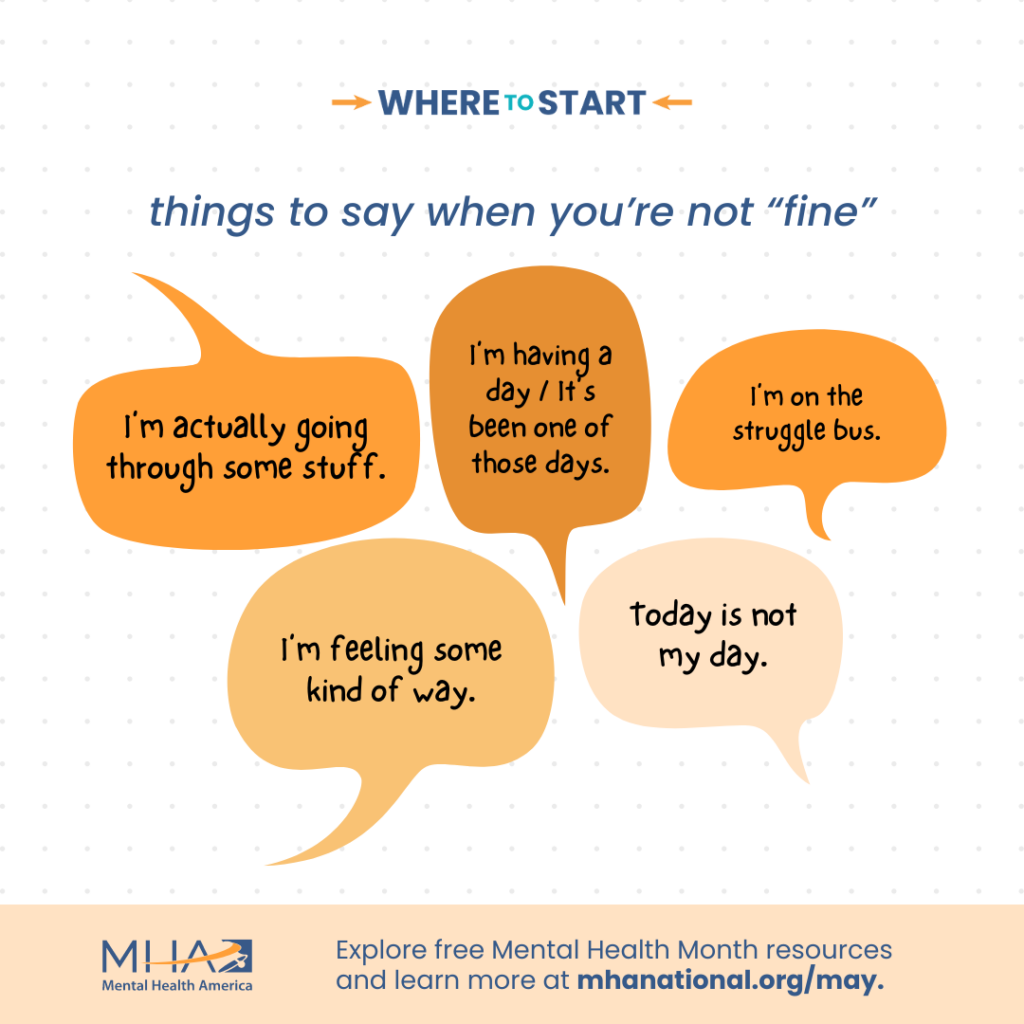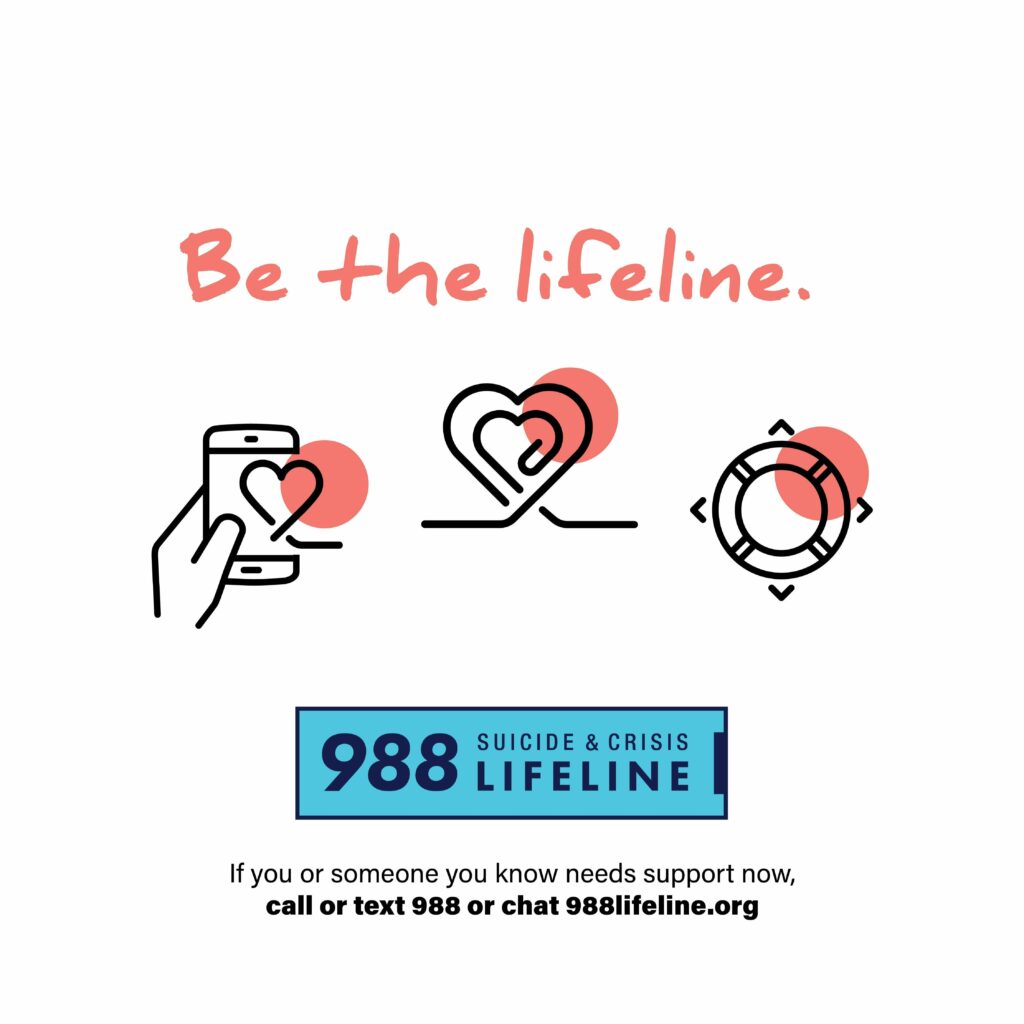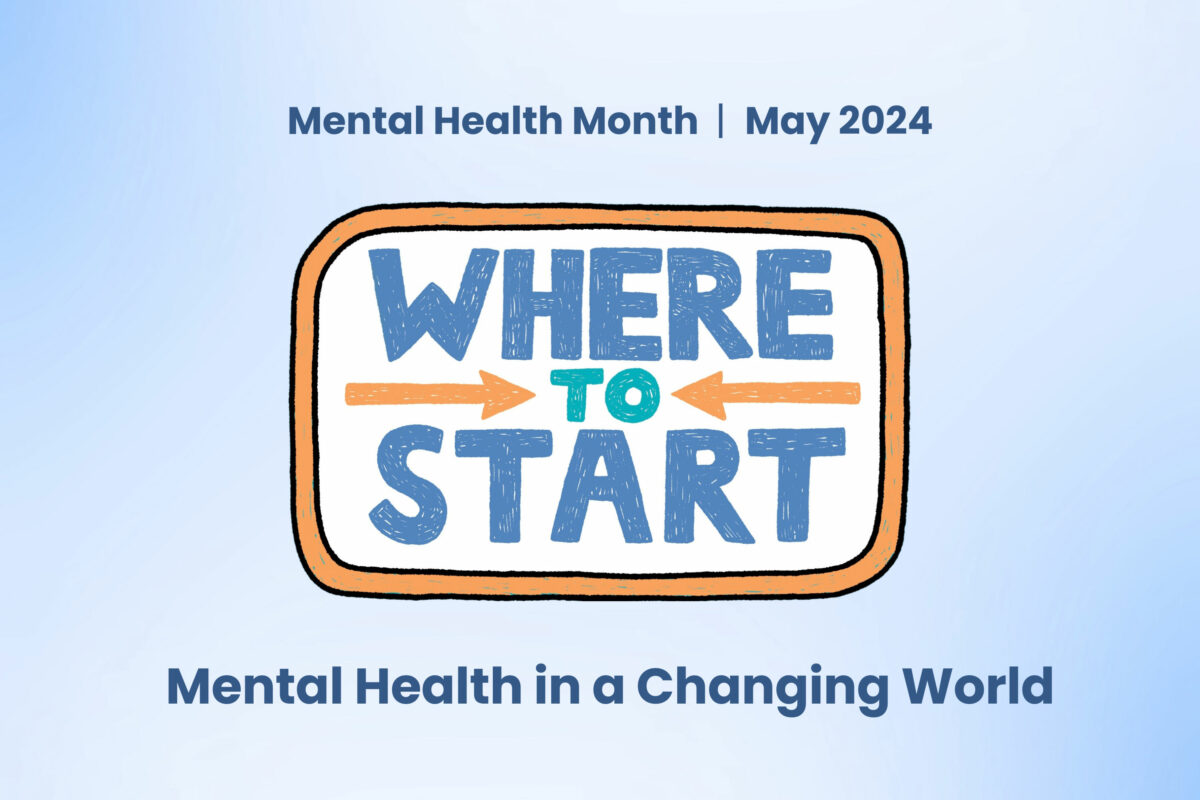Year after year, the culture improves in awareness, advocacy, and accessibility of mental health knowledge and services. In that same breath, we also acknowledge that great strides are needed. Concerns related to insurance, availability of providers, and a lack of health equity mean we have much work to do. Despite these challenges, we wanted to take some time to provide some broad-stroke information about mental health that will remind us all how important this month of awareness is and how we can be a part of the solution.
General Mental Health Information
- Mental health is a broad term that refers to a person’s psychological, social, and emotional well-being.
- Mental health is affected by our genetics and life experiences (nature + nurture).
- Just like everyone has a degree of physical health, everyone has a degree of mental health.
- “Mental wellness” refers to feeling generally positive about one’s self and circumstances paired with the ability to cope with daily activities and challenges. Mental wellness is also sometimes referred to as an active process of pursuing “mental fitness.”
- In contrast, “mental illnesses” are disorders of mood, thinking, and/or behavior that require criteria for diagnosis via the Diagnostic and Statistical Manual of Mental Disorders (DSM-5).
- It is important to note that while everyone occasionally feels sad, angry, grieves, and has mood changes, what often distinguishes temporary adjustment difficulties from a mental disorder is the intensity, duration, and interference with one’s ability to cope/function.

Mental Health Statistics
It is hard to offer confident mental health statistics. The reasons for this are many. Mental health care is still, in some ways, a developing field with a complicated history. Many mental health disorders used to be criminalized or used as grounds for removing people from society. And, while brain mapping, chemical studies, and blood samples can tell us some things about a person’s mental health experience, much of what we know still comes down to someone’s described experience.
For this reason, as much as mental health disorders are physical health experiences that can improve with therapy and/or medication, it is harder to point to a test number or result as a guide for treatment. Scientists are working hard to find more concrete ways to understand mental health disorders so providers have increased ways to be more accurate and effective with treatment and medication. And, of course, many people who are suffering don’t (or can’t) seek treatment. All of this means that it’s just not as easy to say how many people have a mental health disorder as it is to pinpoint a number for a physical illness.
With these parameters in mind, the National Alliance on Mental Illness (NAMI) cites that 1 out of every 5 people or 20% of the population experiences a mental illness. Other organizations offer numbers closer to 1 out of every 4 or 25% of the population. Some other commonly cited statistics are:
- The symptoms of many mental health disorders often first appear in someone’s late teens or early 20’s although they can occur outside of this range. It is important to remember that experiences such as trauma can bring on mental challenges at any age.
- People can have co-occurring disorders (i.e. depression and anxiety) that require support for both concerns.
- Depression and anxiety are the most commonly experienced mental health disorders.
- Suicide is often connected to the mental health diagnosis of depression and/or substance abuse disorder. Men are more likely to die by suicide while women are more likely to attempt it. The discrepancy is typically associated with the difference in the lethality of the method.
- We have barely scratched the surface. There are hundreds classified forms of mental disorders in the DSM-5.

What Part Can We Play in Mental Health Care?
As we’ve seen, the numbers show that there are millions of people who experience mental health disorders and all of us sometimes go through hard times where we just need a friend to talk with. For a variety of reasons, only about 20% of people ever seek out mental/behavioral health care. For the remaining 80%, it is extremely common for people who are struggling to first go to a friend or family member for love and support. So, if we are all that likely to end up being someone’s support person, what should we know?
- While everyone isn’t a mental health professional (nor should they try to be unless qualified) listening and being present with a suffering person does far more good than many realize.
- It’s an easy Google search to find a list of qualities to look for in someone who is struggling with their mental health or in crisis. But, one of the most important things to look for is change. If you or someone you know is experiencing a negative change in how you feel, think, or behave and/or have been suffering for some time, encourage them to seek help from a medical or mental health professional.
- Know your resources. The most common way for people to get mental health care is through work EAP, insurance, self-pay/sliding scale for in-person care, or through online options like betterhelp.com talkspace.com or faithfulcounseling.com
- Be open to hearing other people’s experiences and working to reduce stigma. While money, laws, and organizational changes for mental health care are be wonderful, each and every day we can help improve individual lives by just being willing to hear people’s stories and tell them there is help and hope if they are struggling with their mental health. Grassroots is where powerful change often begins.

While we barely touched the surface of all of the wonderful information out there about mental health, hopefully these broad details give you a starting place to increase knowledge, awareness, advocacy, and compassion. Mental health is all of our business. Be there.
May 6, 2024. By Anne Rulo, Author, Speaker, Therapist. www.annerulo.com. FB/IG/Twitter @annemrulo
